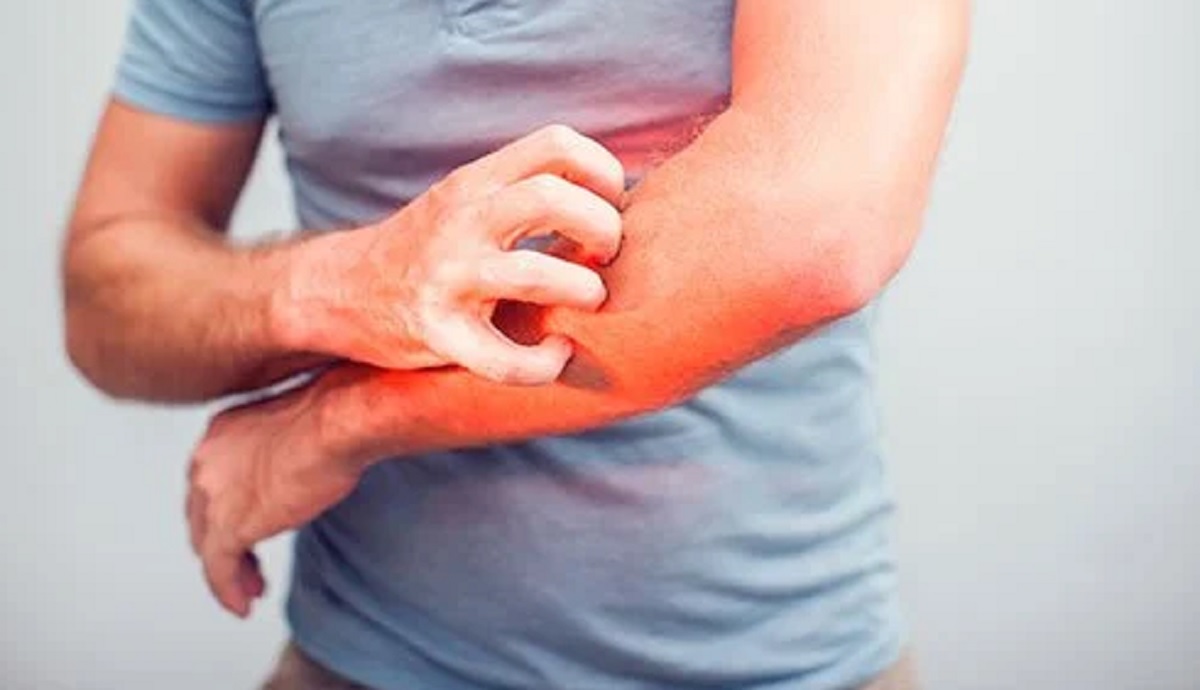Hives
Hives or urticaria is a skin rash that develops due to an allergic reaction. The American College of Allergy, Asthma, and Immunology reports that about 20% of people will develop hives at least once during their lives. Exposure to something like peanuts, medications, insect bites, latex, pet dander, or pollen usually triggers hives. Symptoms of hives include:
- Itching
- Small raised red or flesh-toned bumps
- Centers of the bumps turn white if you press on them
- Additional allergy symptoms like sneezing, runny nose, or red, watery eyes
Hives may occur anywhere. If you develop them from touching something, you’re most likely to get them on your fingers or hands.

Rosacea
Rosacea is a chronic inflammatory skin condition that is most common in middle-aged white women but can affect men and women of all ages and races. Some signs of rosacea include:
- Flushing or blushing
- Swollen pimples that resemble acne blemishes
- Burning sensation or tenderness
- Warm skin
- Visible veins in the nose and cheeks
Typically, a rosacea rash starts on the face, but it can affect other parts of the body.
When To See a Doctor for Skin Rashes
Many rashes will go away on their own without any treatment from a doctor. However, if any of the following applies to you, talk to your healthcare provider, as you may have a serious condition or require medication:
- Your rash covers all or most of your body.
- You have a fever of 100.4°F or higher as well as a rash.
- The rash appeared suddenly and is spreading rapidly.
- You are developing blisters or open sores.
- The rash is painful.
- You notice signs of infection like swelling, crusting, warmth, or yellow or green fluid in the area.

